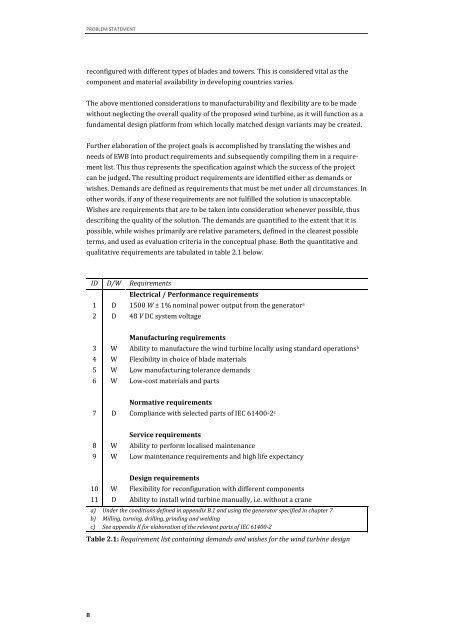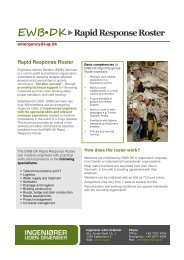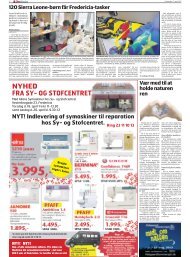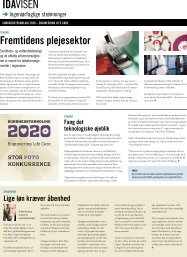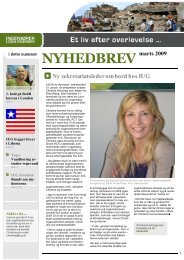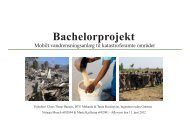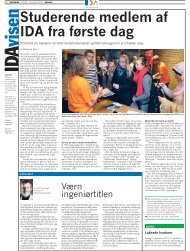Create successful ePaper yourself
Turn your PDF publications into a flip-book with our unique Google optimized e-Paper software.
PROBLEM STATEMENT<br />
reconfigured with different types of blades and towers. This is considered vital as the<br />
component and material availability in developing countries varies.<br />
The above mentioned considerations to manufacturability and flexibility are to be made<br />
without neglecting the overall quality of the proposed wind turbine, as it will function as a<br />
fundamental design platform from which locally matched design variants may be created.<br />
Further elaboration of the project goals is accomplished by translating the wishes and<br />
needs of EWB into product requirements and subsequently compiling them in a require-<br />
ment list. This thus represents the specification against which the success of the project<br />
can be judged. The resulting product requirements are identified either as demands or<br />
wishes. Demands are defined as requirements that must be met under all circumstances. In<br />
other words, if any of these requirements are not fulfilled the solution is unacceptable.<br />
Wishes are requirements that are to be taken into consideration whenever possible, thus<br />
describing the quality of the solution. The demands are quantified to the extent that it is<br />
possible, while wishes primarily are relative parameters, defined in the clearest possible<br />
terms, and used as evaluation criteria in the conceptual phase. Both the quantitative and<br />
qualitative requirements are tabulated in table 2.1 below.<br />
8<br />
ID D/W Requirements<br />
Electrical / Performance requirements<br />
1 D 1500 W ± 1% nominal power output from the generator a<br />
2 D 48 V DC system voltage<br />
Manufacturing requirements<br />
3 W Ability to manufacture the wind turbine locally u<strong>sin</strong>g standard operations b<br />
4 W Flexibility in choice of blade materials<br />
5 W Low manufacturing tolerance demands<br />
6 W Low-cost materials and parts<br />
Normative requirements<br />
7 D Compliance with selected parts of IEC 61400-2 c<br />
Service requirements<br />
8 W Ability to perform localised maintenance<br />
9 W Low maintenance requirements and high life expectancy<br />
Design requirements<br />
10 W Flexibility for reconfiguration with different components<br />
11 D Ability to install wind turbine manually, i.e. without a crane<br />
a) Under the conditions defined in appendix B.1 and u<strong>sin</strong>g the generator specified in chapter 7<br />
b) Milling, turning, drilling, grinding and welding<br />
c) See appendix K for elaboration of the relevant parts of IEC 61400-2<br />
Table 2.1: Requirement list containing demands and wishes for the wind turbine design


